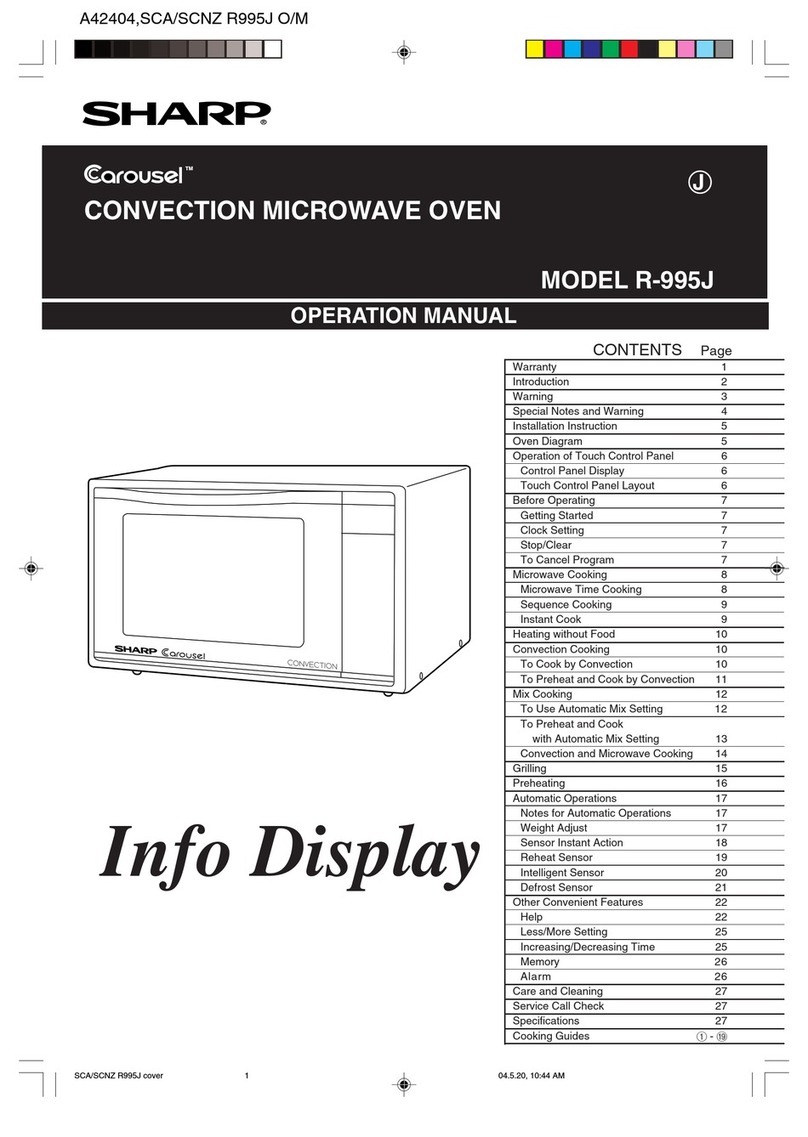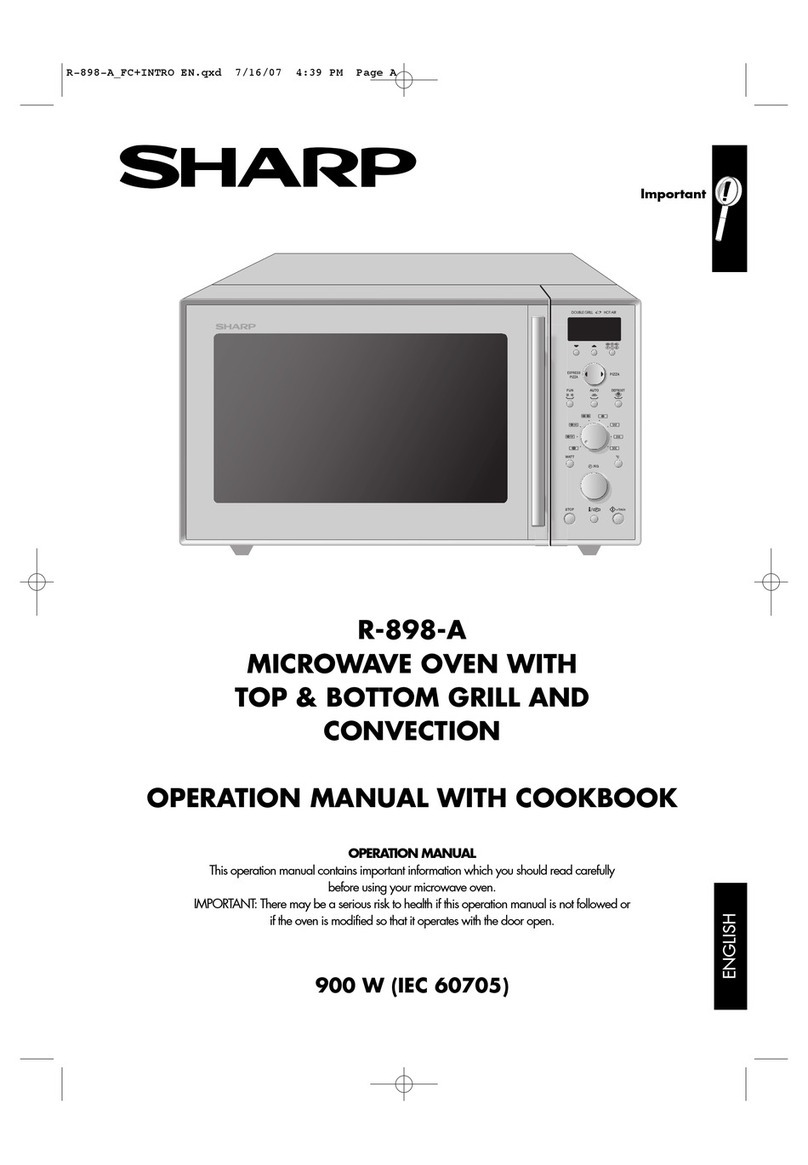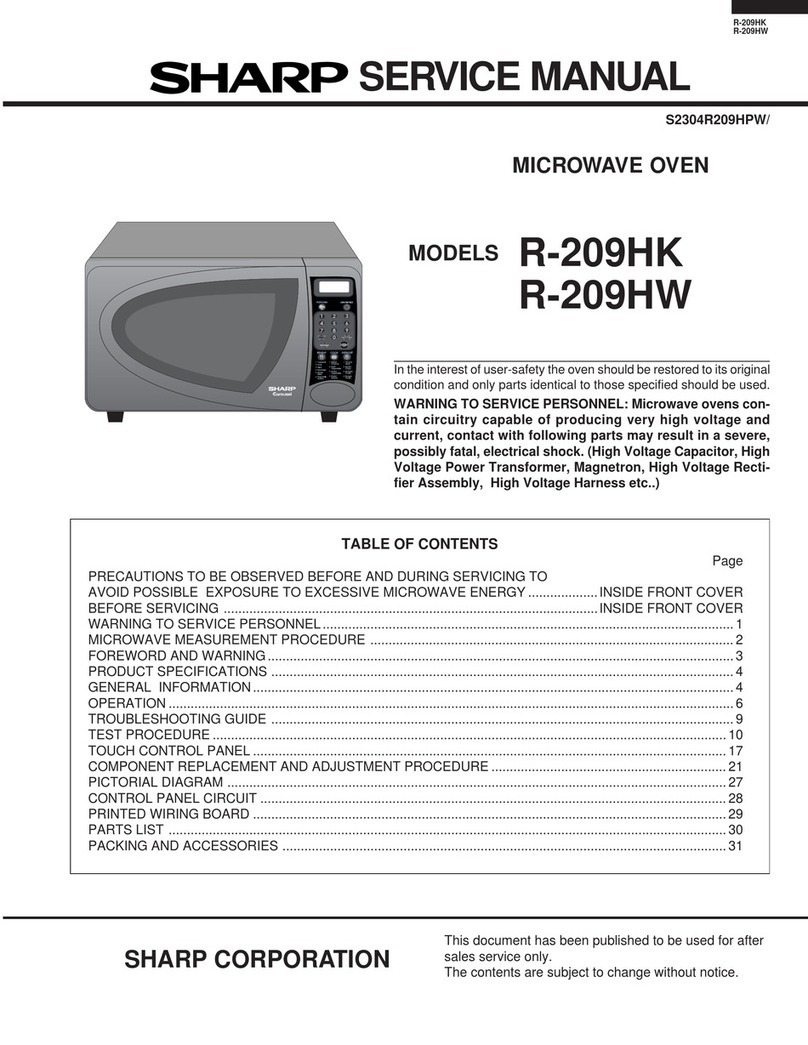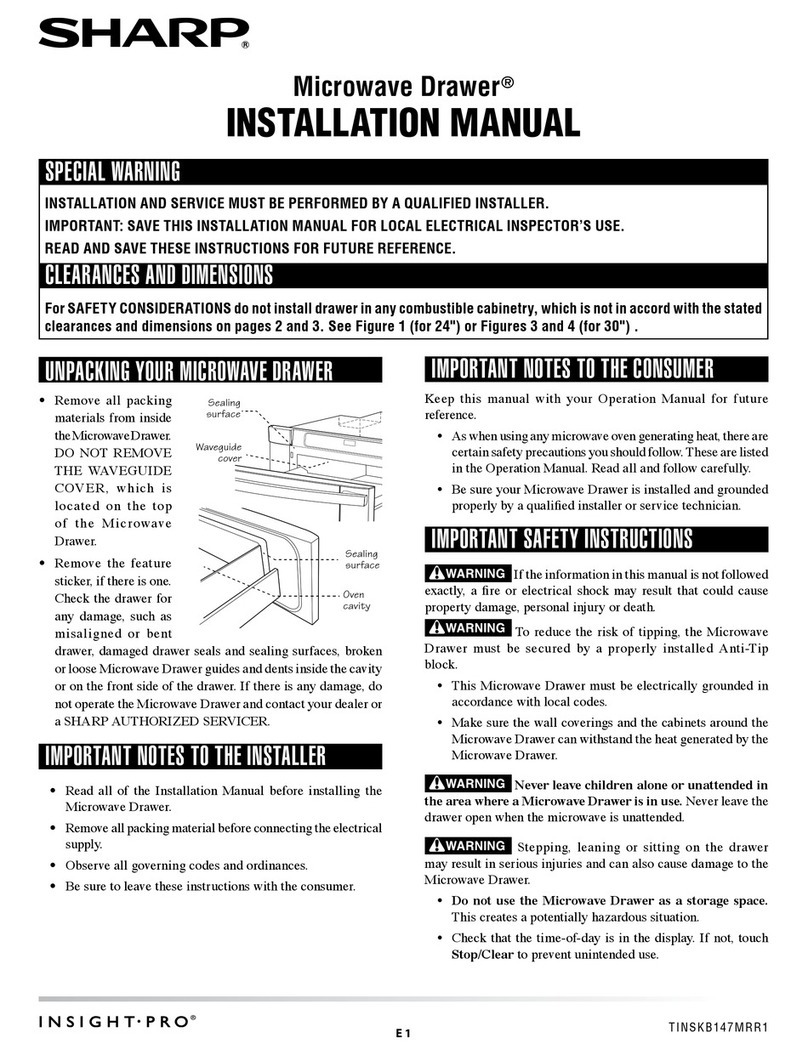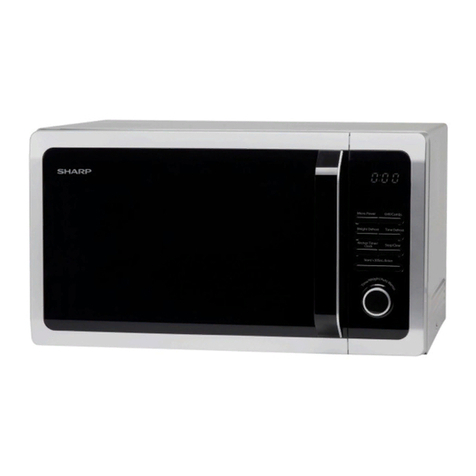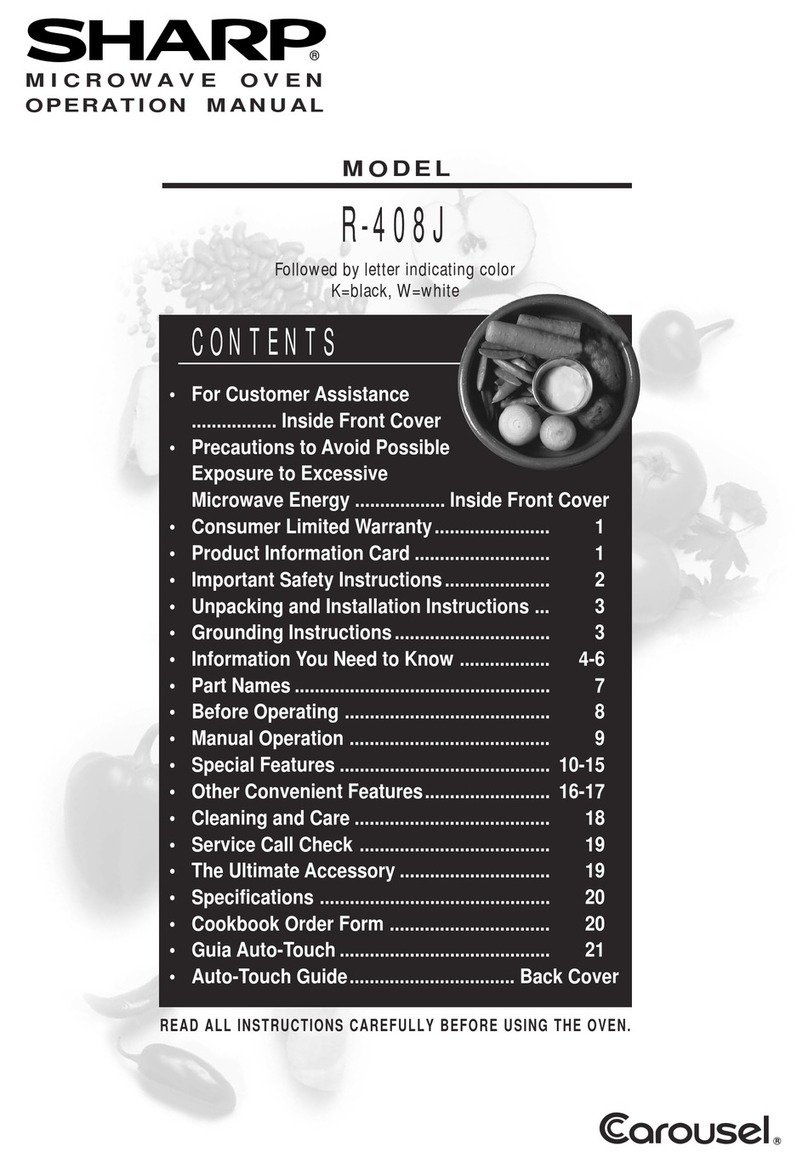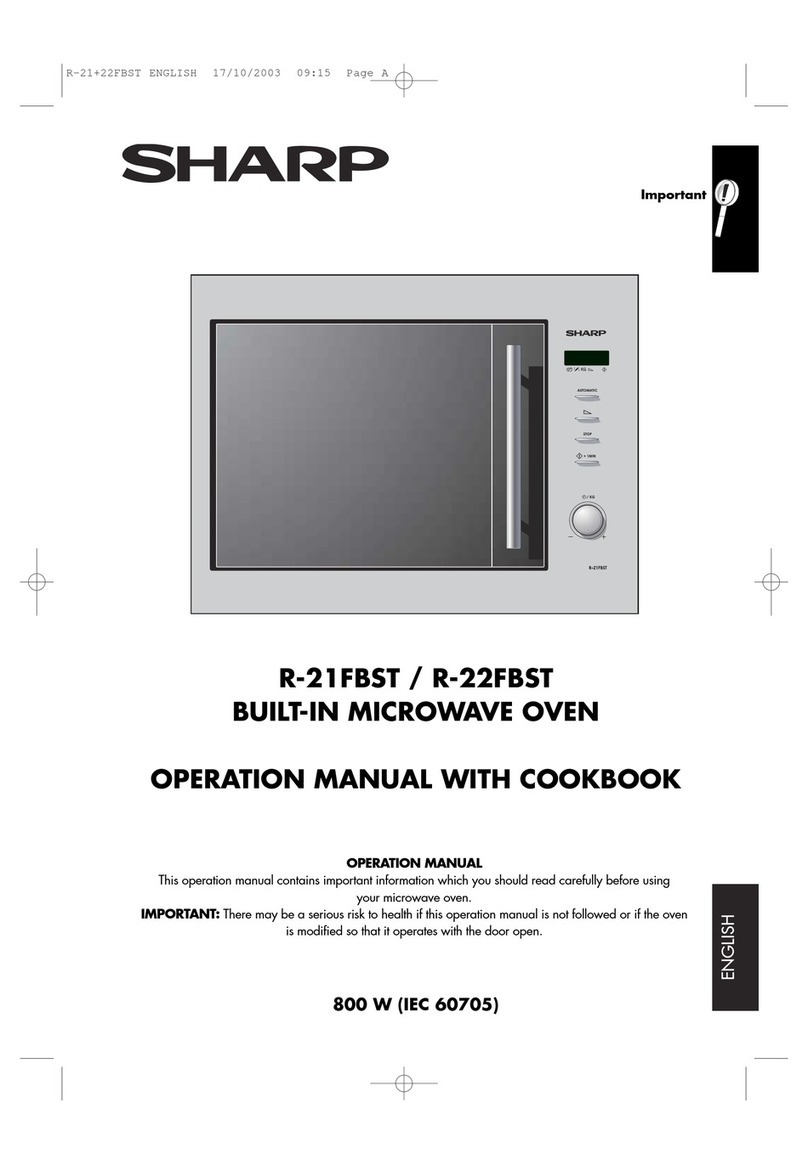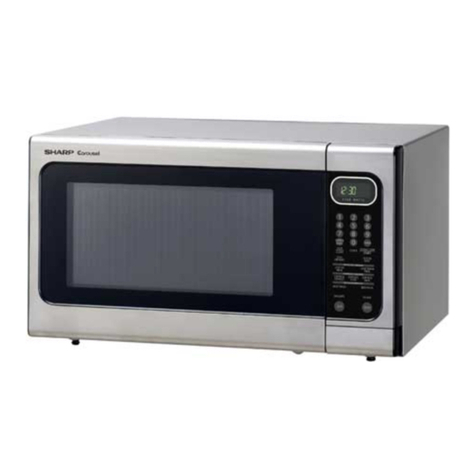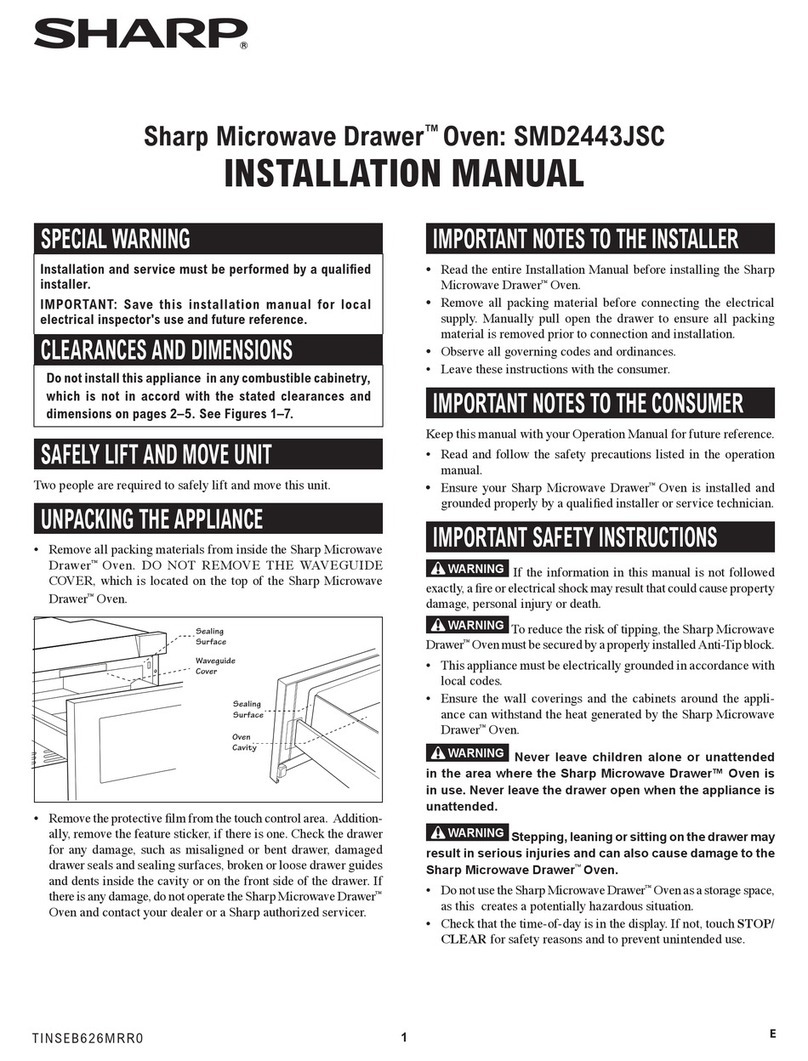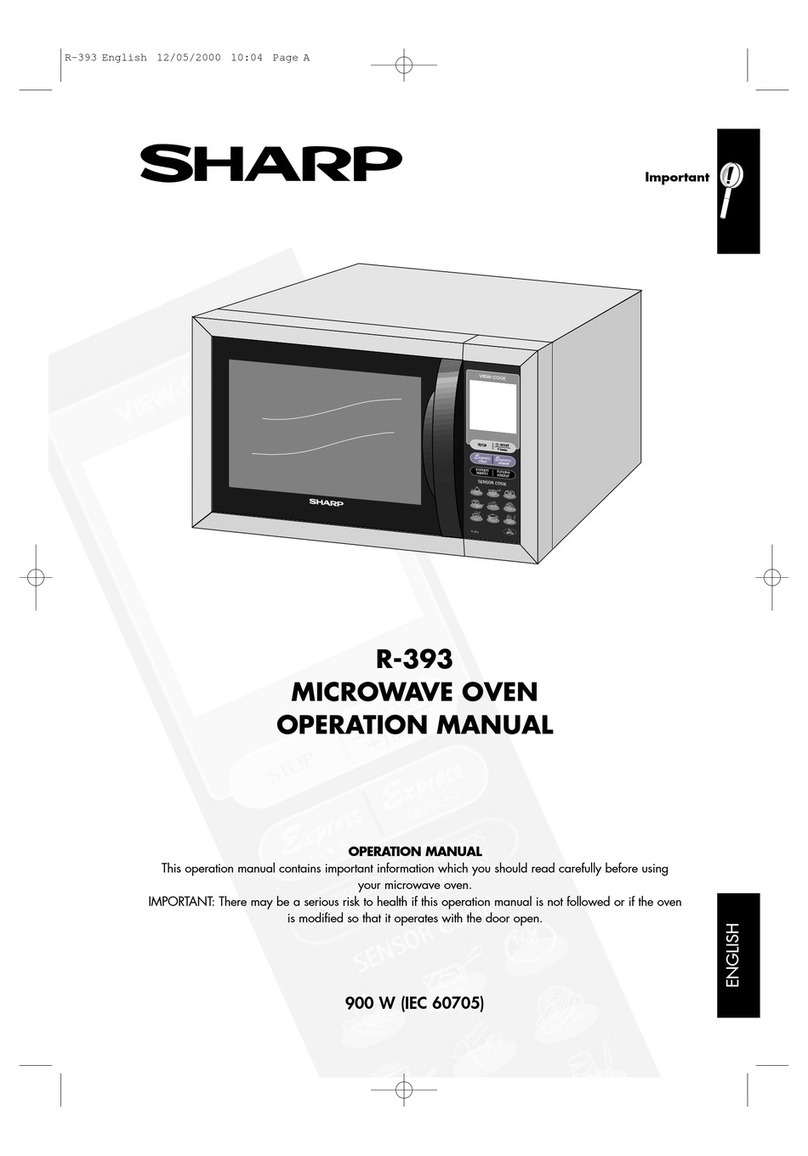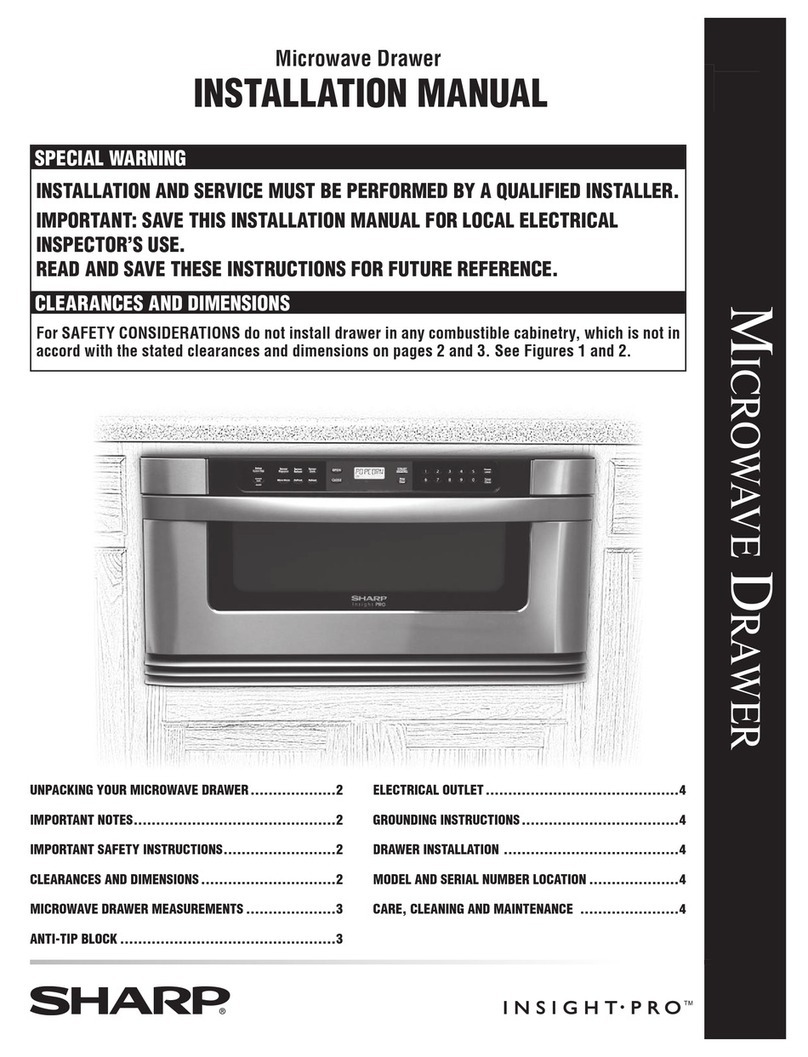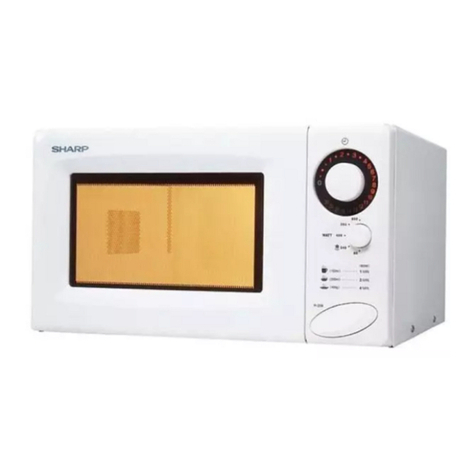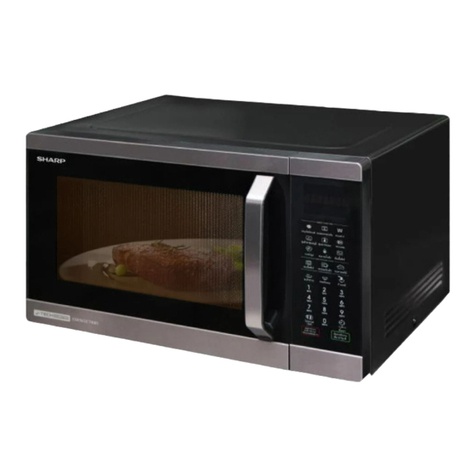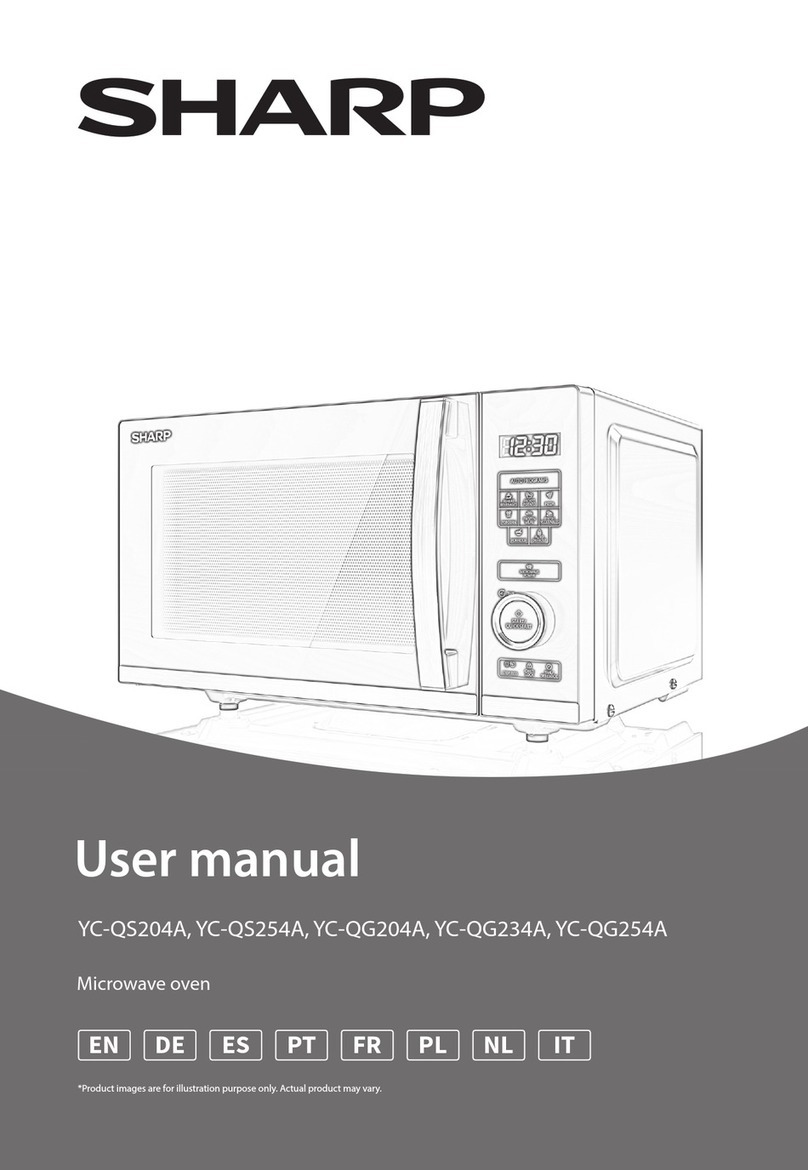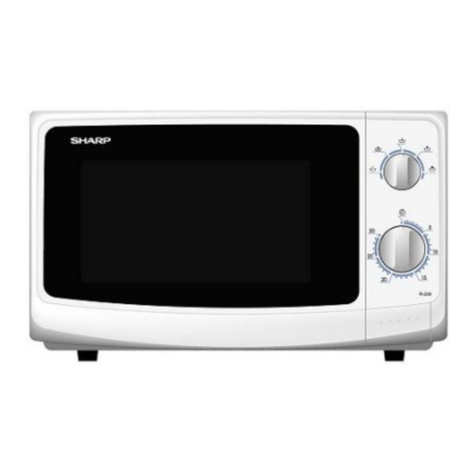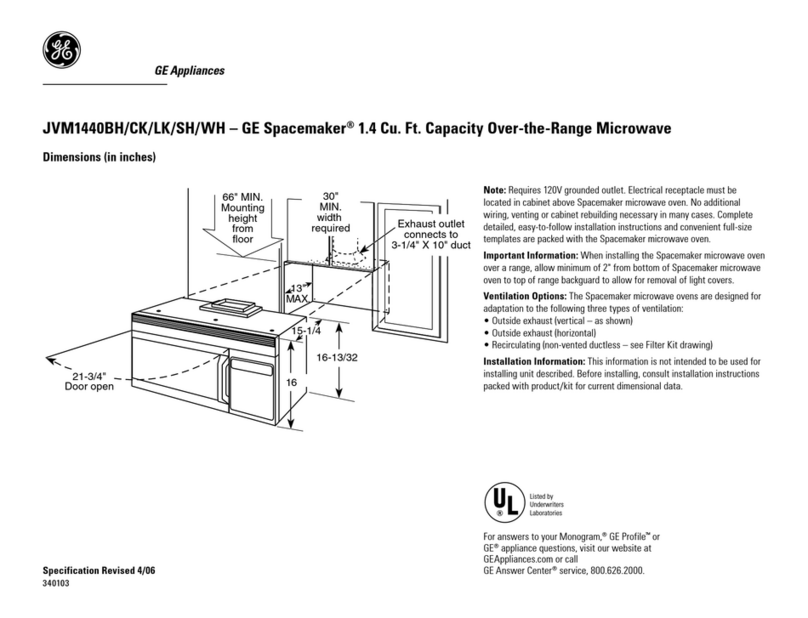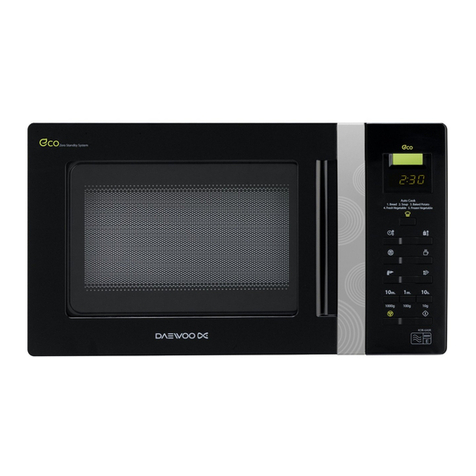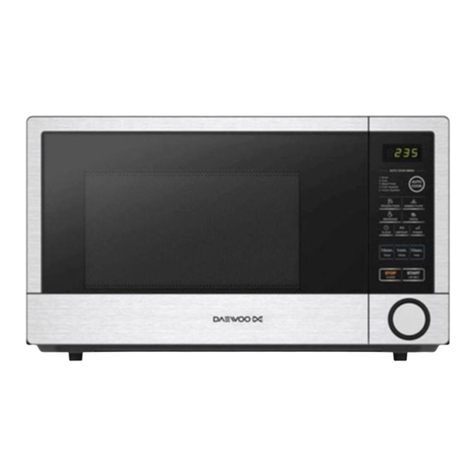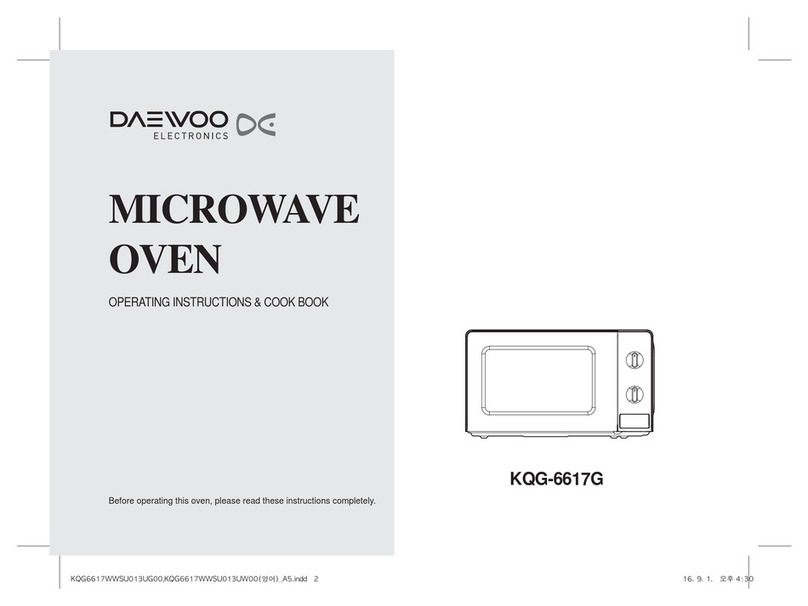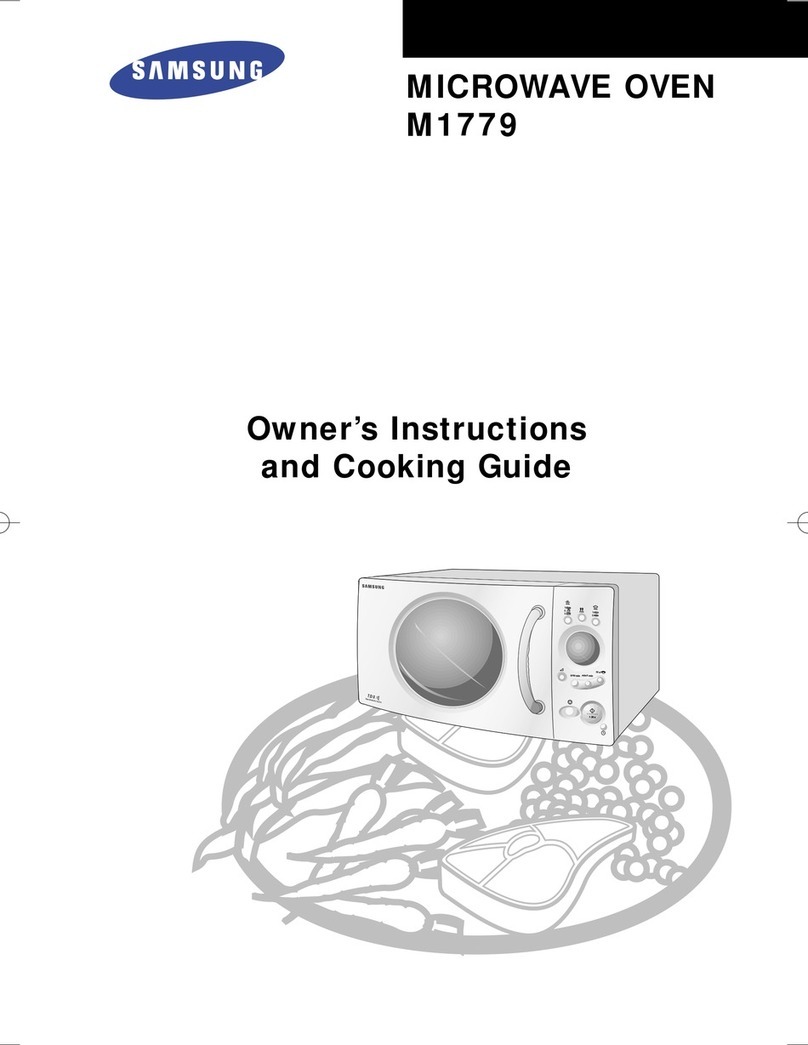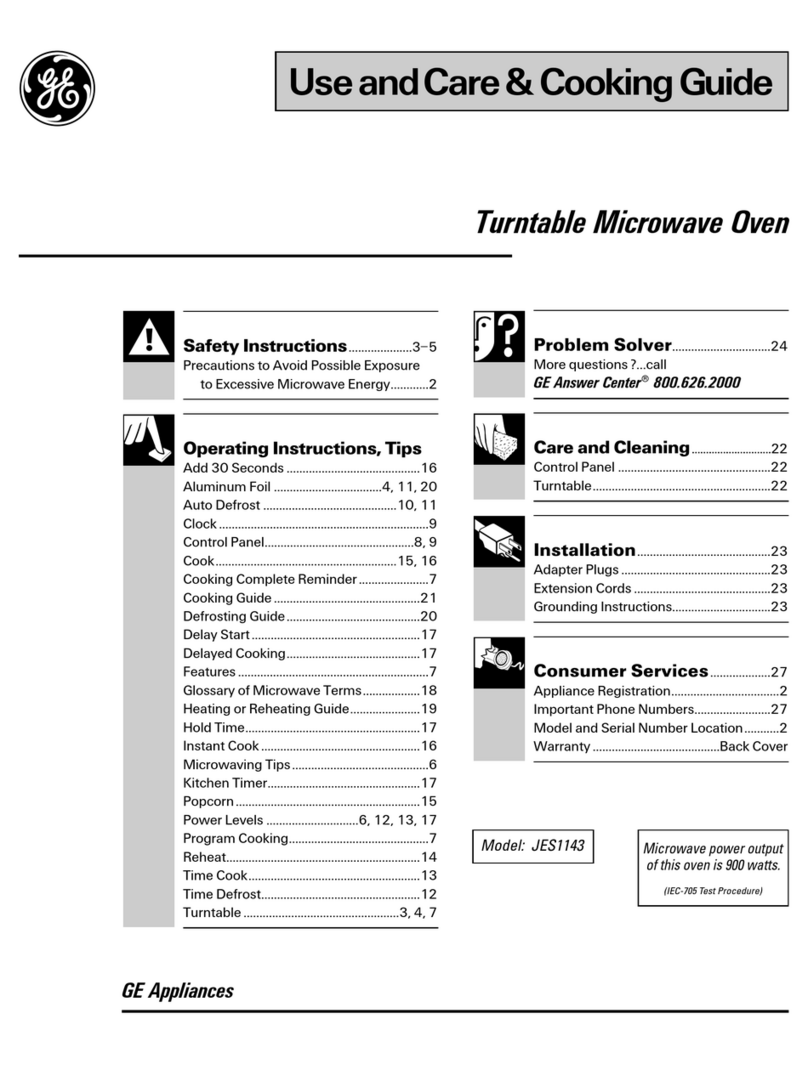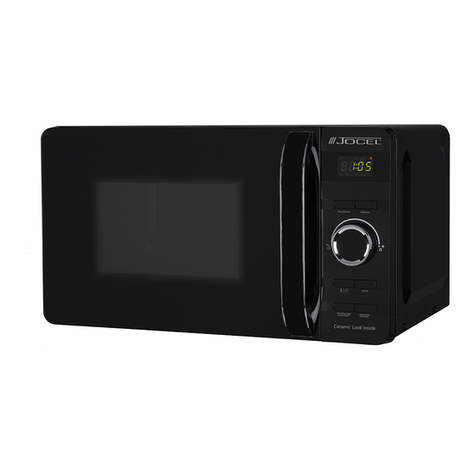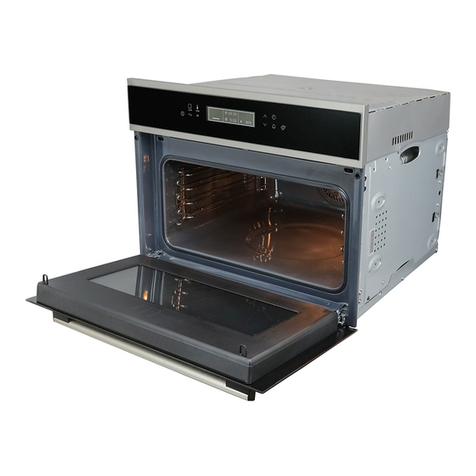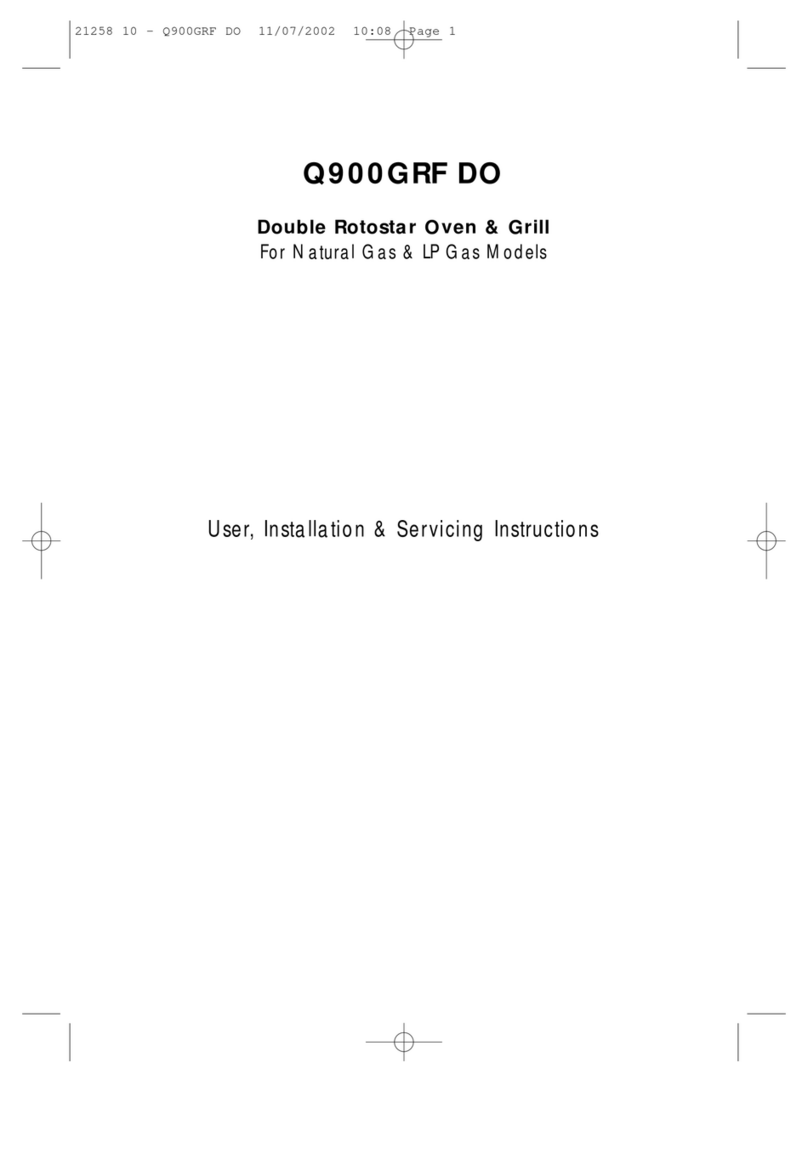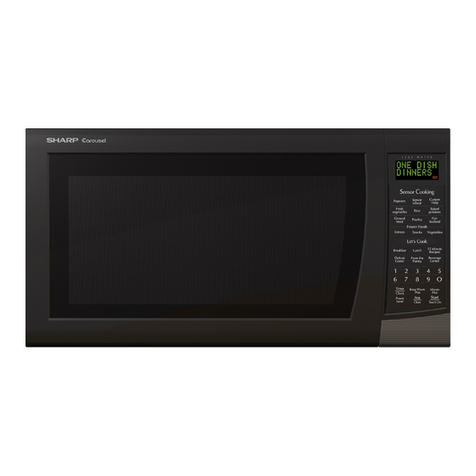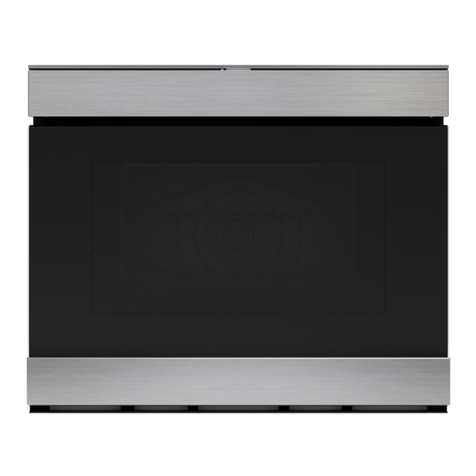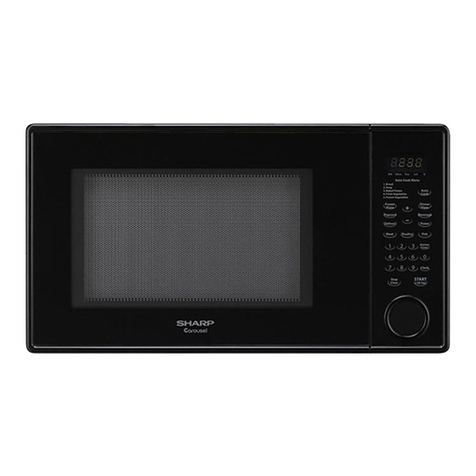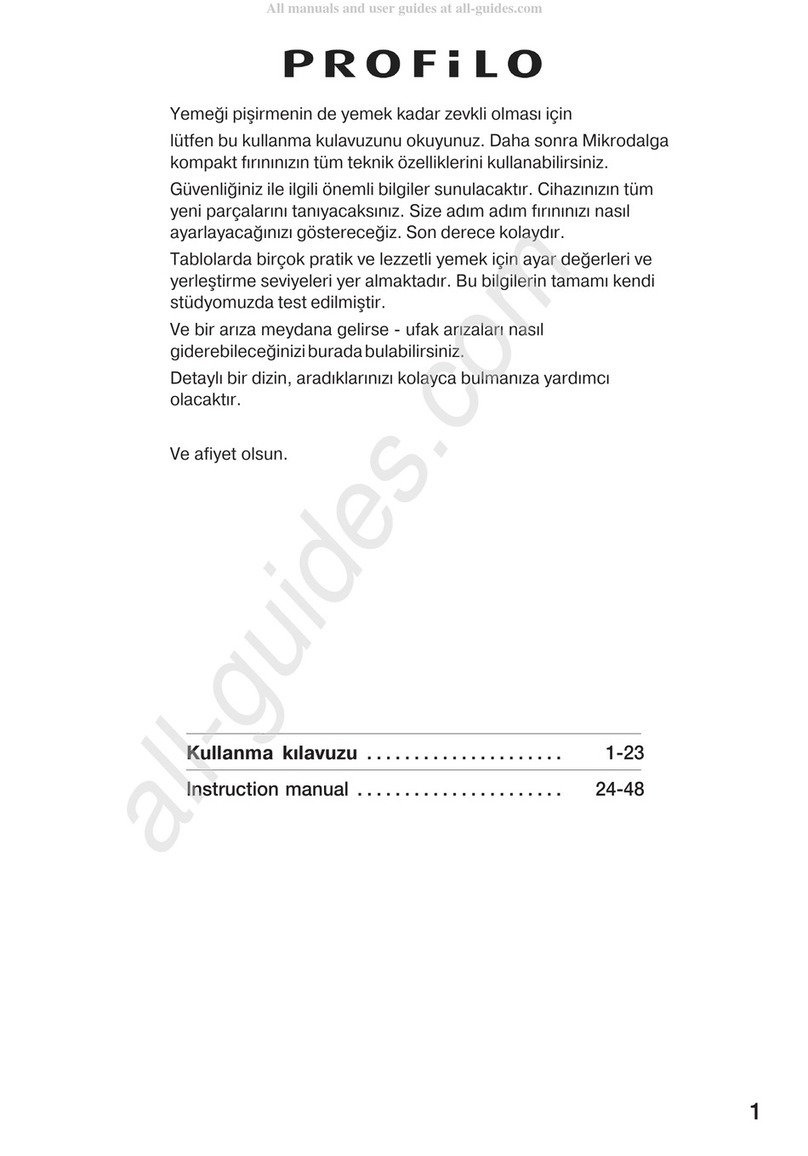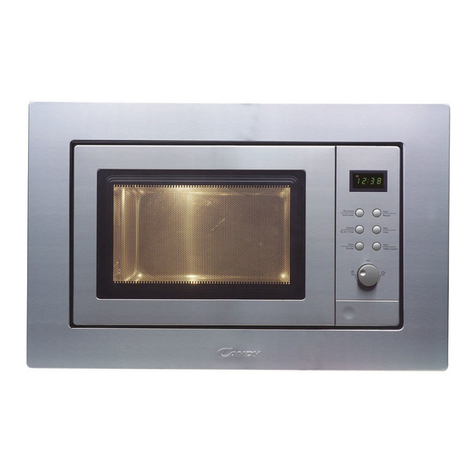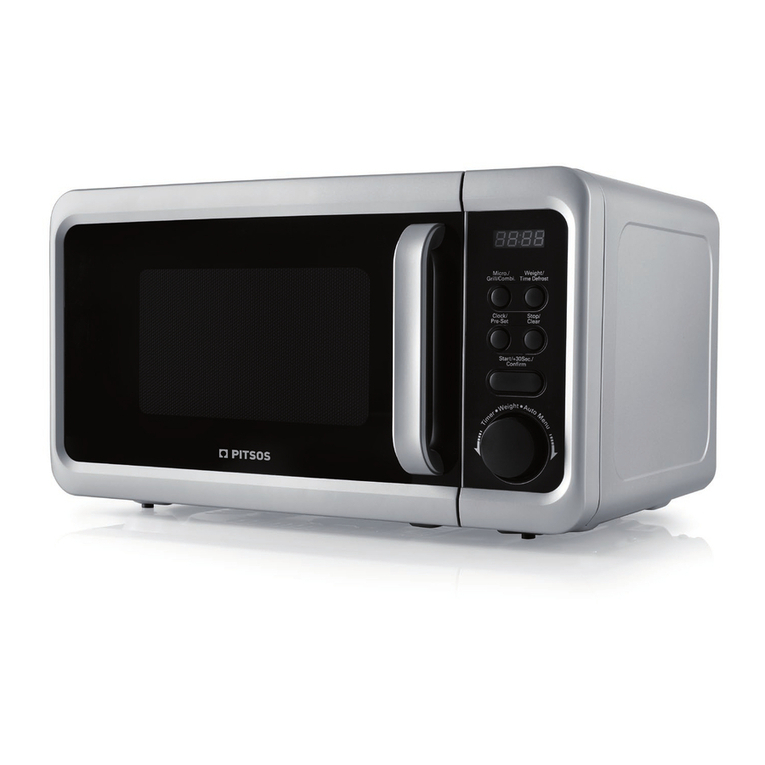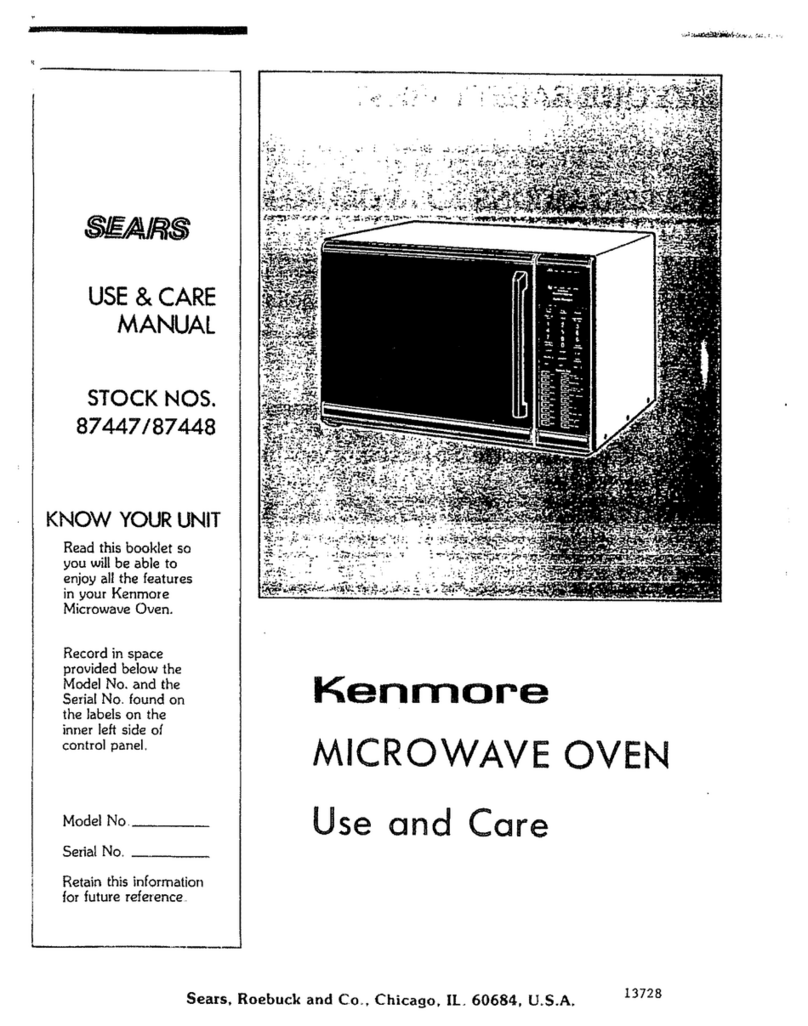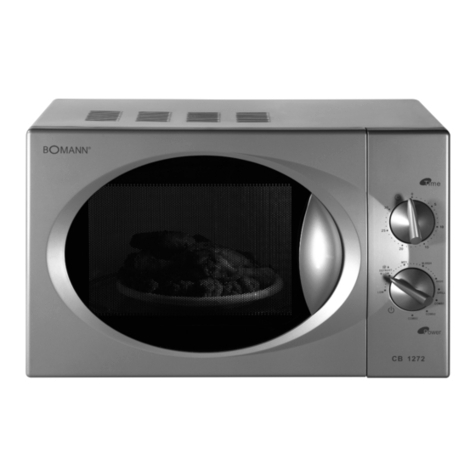R-880F(S)
5
1. The relay RY3 + RY5 + RY6 are energized.
2. The numbers of the digital read-out start the count
down to zero.
3. Then the top heaters, turntable motor, oven lamp and
fan motor are energized.
4. Now, the food is grilled by the top heaters.
5. Upon completion of the selected cooking time, audible
signal sounds and the contacts of relays RY3 + RY6
are opened, then the top heaters, turntable motor and
oven lamp are de-energized. But the relay RY5 stays
closed and the fan motor operates for 5 minutes. But if
the cooking time is less than 2 minutes the relay RY5
will not stay close.
BOTTOM HEATER MODE
In this mode, the food is cooked by the bottom heater.
PresstheGRILL padtwiceand then enterthecooking time
by pressing the number pads. When the START pad is
pressed, the following operations occur:
Figure O-3(b) on page 34
1. The relay RY4 + RY5 + RY6 are energized.
2. The numbers of the digital read-out start the count
down to zero.
3. Then the bottom heater, turntable motor, oven lamp
and fan motor are energized.
4. Now, the food is grilled by the bottom heater.
5. Upon completion of the selected cooking time, audible
signal sounds and the contacts of relays RY4 + RY6
are opened, then the bottom heating elements, turnta-
ble motor and oven lamp are de-energized. But the
relay RY5 stays closed and the fan motor operates for
5 minutes. But if the cooking time is less than 2 minutes
the relay RY5 will not stay close.
TOP AND BOTTOM HEATER MODE
In this mode, the food is cooked by both the top heaters
and bottom heater. Press the GRILL pad three times and
then enter the cooking time by pressing the number pads.
When the START pad is pressed, the following operations
occur:
Figure O-3(c) on page 35
1. The relay RY3 + RY4 + RY5 + RY6 are energized.
2. The numbers of the digital read-out start the count
down to zero.
3. Then the top heaters, bottom heater, turntable motor,
oven lamp and fan motor are energized.
4. Now, the food is grilled by the top heaters and the
bottom heater.
5. Upon completion of the selected cooking time, audible
signal sounds and the contacts of relays RY3 + RY4 +
RY6 are opened, then the top heating elements, bot-
tom heating element, turntable motor and oven lamp
are de-energized. But the relay RY5 stays closed and
the fan motor operates for 5 minutes. But if the cooking
time is less than 2 minutes the relay RY5 will not stay
closed.
GRILL MIX COOKING CONDITION
The oven will cook food by supplying grill heaters (top
heaters or Bottom heater) and microwave energy alter-
nately within a 48 seconds time base. And the oven has
four programmed cooking mode.
HIGH MIX TOP GRILL MODE AND LOW MIX TOP
GRILL MODE
In these modes, the food is cooked by the top heaters and
the microwave energy. Press the MIX pad once for HIGH
MIX TOP GRILL mode. Press the MIX pad twice for LOW
MIX TOP GRILL mode. And then enter the cooking time
by pressing the number pads. When the START pad is
pressed, the following operations occur:
Figure O-5(a) on page 36
1. The relay RY5 + RY6 are energized.
2. The numbers of the digital read-out start the count
down to zero.
3. The turntable motor, oven lamp and fan motor are
energized.
4. The relay RY2 + RY3 are energized alternately within
a 48 seconds time base by the control unit.
5. The top heaters operate through the relay RY3 is
energized. And the high voltage transformer operates
through the relay RY2 is energized.
6. The relationship between the top heating elements and
magnetron operations are as follows.
Note: The On/Off time ratio does not exactly correspond
to the percentage of microwave power, because
approx. 2 seconds are needed for heating up the
magnetron filament.
7. Upon completion of the selected cooking time, audible
signal sounds and the contacts of relays RY2 + RY3 +
RY6 are opened, then the top heaters, high voltage
transformer, turntable motor and oven lamp are de-
energized. At the end of the convection cycle, if the
cavity air temperature is above 120˚C, the circuit to
RY5 will be maintained (by the thermistor circuit) to
continue operation of the cooling fan motor until the
temperature drops below 104˚C, at which time the
relay will be de0energized, turning off the fan motor.
HIGH MIX BOTTOM GRILL MODE AND LOW MIX BOT-
TOM GRILL MODE
In these modes, the food is cooked by the bottom heater
and the microwave energy. Press the MIX pad three (3)
timesforHIGH MIX BOTTOMGRILLmode. Press theMIX
pad four (4) times for LOW MIX BOTTOM GRILL mode.
And then enter the cooking time by pressing the number
pads. When the START pad is pressed, the following
operations occur:
Figure O-5(b) on page 36
1. The relay RY5 + RY6 are energized.
2. The numbers of the digital read-out start the count
down to zero.
3. The turntable motor, oven lamp and fan motor are
